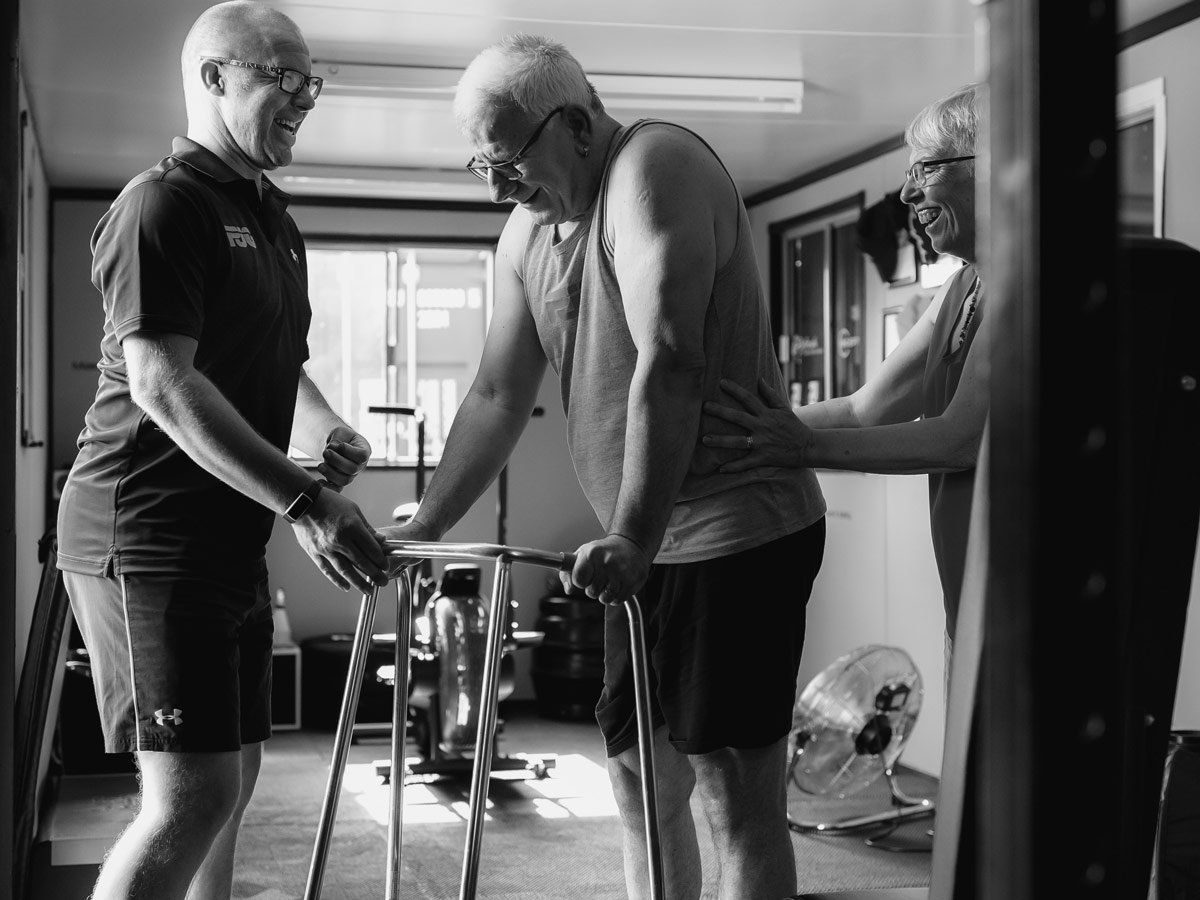
According to the World Stroke Association, around 13 million people globally will experience a stroke on some level. Of this, approximately 5 million people at any age will be left with life-changing disabilities.
During the rehabilitation phase post-stroke, you will have a therapy package which may include physiotherapists and language therapists, for example. At some point, though, the care you receive will end, often far too early for many to contemplate what would be possible, given the right environment, exercises and coach. In addition, the residual effects of a stroke may last weeks, years or indefinitely.
A stroke is like a tattoo on the brain; even if removed, the scar remains, and the survivor has to adapt to a different way of life.
As a Personal Trainer who has helped many clients who have had strokes on different levels, as well as those with different types of brain injuries, I have found that exercise and fitness can dramatically improve not only the physical improvement of the client but also the mental, social and emotional feeling of positivity it brings.
So what, in my opinion, are the key areas that can be worked on that, over time, will improve the condition of a stroke survivor
Fatigue
One of the most significant factors that affect the client is fatigue. This can vary depending on the individual, plus the environment they are in. Whilst the individual wants to carry on post-stroke, the body may not be physically able to. Because of this, the brain gets tired due to the constant effects of concentration and the desire and drive to do what it did before. One of the best approaches is to move and exercise in small manageable chunks, sometimes just a few minutes at a time. Allow plenty of rest to allow the body and mind to recover. Schedule an exercise at the beginning of the day before the individual becomes tired.
Speech
Talking requires a lot of effort from the brain and, as such, will tire you out. Depending on the level of stroke experienced, this will determine the level of how it affects the individual’s speech. Simple techniques that can be used are introducing a regular reading schedule. This can be 5 to 10 minutes to start with and increase as time goes on. In the beginning, use books with a larger font and larger line spacing to avoid eye strain. Simple talking is also great for the improvement of speech, but don’t make questions too complex and allow time for the individual to respond. Another fun game I like to play is with a pack of cards and simply getting the individual to read out the card as they are turned over one at a time. Remember, the brain will want to respond immediately; however, the process of application will be delayed. The critical thing to remember here is repetition, repetition and repetition.
Physical
In my opinion, the most significant area that needs to be worked on, but be patient as it’s a slow process and one you must not get frustrated over. The main areas that may need to be focused on are balance, posture and strength. Simple tasks such as walking and standing up can be really challenging, so basic movements like sitting up straight, standing up from a chair and standing knee raises can help a lot. When walking, take your time, keep your head and back straight and focus on lifting your feet and knees rather than shuffling across the floor. Walking aids are helpful; however, I try to minimise their use as it gets the person used to their own balance capabilities and improves confidence.
Working on strength needs to involve the entire body. Legs, as we’ve discussed above, but also the use of equipment like light dumbbells and stability balls will help practice a vast variety of exercises to strengthen all the upper body muscles. This, in turn, will assist with walking and daily tasks that involve supporting your body weight, like getting in and out of bed, walking up the stairs and getting out of the car. Finally, core strength. As they say, having a strong core gives you a strong body. This couldn’t be truer, especially when balance and posture are vital post-stroke. Once the individual has confidence, practice exercises on the floor, such as sit-ups and planks with their knees on the floor, and increase time or repetitions as strength improves.
The lasting effects of a stroke will determine the individual’s physical abilities and progress. Confidence and self-belief are so essential and will influence this. This is a vital part of my coaching. Never say never, be consistently positive and be innovative, always try new things and make sure you have a great relationship with your coach.
Neurological
Finally, exercising the brain is invaluable. Playing memory games on a tablet, doing a jigsaw or using light reactive games such as those from Blazepod.com or ReactiveX.co.uk will dramatically improve brain fitness as well as hand-to-eye coordination, fine motor skills and above all else, have fun!